Imagine a cool morning, the sunlight slowly piercing through the mist, and vast stretches of green rice fields unfolding as far as the eye can see—like a giant carpet woven by nature’s hand. This is Jatiluwih, a small village in Tabanan Regency, Bali, whose name resonates across the world’s cultural heritage map. It is not only admired for its beauty, but also for the meaning that lives behind every patch of rice field and flowing stream.
Jatiluwih is not just a tourist destination—it is a collective masterpiece, passed down through generations, preserved, and celebrated. Let’s dive deeper into the humanistic story of Jatiluwih, where humans, nature, and spirituality breathe as one.
History
Jatiluwih is not a newly developed tourist village driven by trends or large investments. Its existing beauty and local wisdom have grown over hundreds of years, intertwined with the heartbeat of its people.Historical records show that Jatiluwih has been an important agricultural area since the era of the Tabanan Kingdom. Its strategic location on the slopes of Mount Batukaru, with fertile soil and natural water sources, made it an ideal place for rice farming. The existence of Subak temples such as Pura Luhur Petali and Pura Taksu Agung proves that agricultural and spiritual activities here have been ongoing since the 9th century.During the kingdom era, Jatiluwih farmers were renowned for producing the finest rice. The red rice from this region was highly valued not only for its taste but also for the clean and prayerful farming methods.When the colonial era arrived, many agricultural areas in Bali were shifted into plantations managed by the Dutch. However, the people of Jatiluwih remained loyal to traditional farming. They were not tempted to change their planting patterns for short-term profit. This preserved the authenticity of Jatiluwih’s landscape, now admired worldwide.The journey to become a UNESCO World Heritage site was not instant. It took years of effort—from documenting the Subak system, advocacy by Balinese cultural and academic figures, to the strong support from local communities who rejected massive development to protect the purity of their village.
What is Jatiluwih? A Name Full of Meaning
The name “Jatiluwih” comes from two Balinese words: jati meaning “true” or “authentic” and luwih meaning “beautiful” or “good.” Thus, Jatiluwih literally means “true beauty.” This name is not just a label, but a living reflection of its landscape and the spirit of its people.
Located on the slopes of Mount Batukaru, around 700 meters above sea level, the village enjoys cool air, dramatic scenery, and a soothing atmosphere. But beyond that, Jatiluwih is home to one of the world’s most stunning traditional irrigation systems: Subak.
Subak: An Ancestral Heritage Recognized Worldwide
In 2012, UNESCO designated Bali’s Subak cultural landscape as a World Heritage Site, with Jatiluwih as its iconic symbol. But what exactly is Subak?
Subak is More Than Just an Irrigation System
Subak is Bali’s traditional irrigation system, established since the 9th century. Yet it is more than a method of channeling water—it embodies the Balinese philosophy of Tri Hita Karana: the three causes of harmony—human relationship with God, with fellow humans, and with nature.
In Jatiluwih, farmers don’t just manage the timing of planting and watering; they also maintain spiritual balance. Water is not considered private property, but a shared blessing that must be distributed fairly and respectfully.
Collective Effort in Every Drop of Water
The Subak system is collectively run by farmers, with an organized structure involving a Subak head, members, and special temples where they pray for successful harvests. Meetings involve both discussions and joint prayers. Success in farming is seen as a collective effort, nourished by cooperation and prayers.
Mesmerizing Terraced Rice Fields
Many places in the world feature terraced rice fields, but there’s something different about Jatiluwih. When you gaze at its landscapes, you can sense a rhythm—a rhythm written not just by tools and plows, but by history, ritual, and community spirit.
Earthbound Natural Architecture
The rice fields in Jatiluwih form terraced patterns that follow the natural contours of the mountains. Each patch appears like steps ascending to the sky, surrounded by clear streams and narrow farmer trails. Nothing is randomly made—everything is carefully planned yet remains in harmony with the natural landscape.
Unbroken Cycle of Life
Morning in Jatiluwih is magical. You can see farmers working with genuine smiles, greeting each other, and chatting by the fields after planting. For them, the rice fields are not just an economic resource but a field of spirituality.
Jatiluwih and Its Community: Guarding with Heart
One of the most distinctive aspects of Jatiluwih compared to other tourist destinations is the intactness of its indigenous community. They are not just “locals” viewed through a tourist’s camera lens—they are the main actors in this grand story.
Farmers as Heritage Guardians
Despite the temptations of industrialization and large development offers, the people of Jatiluwih have remained loyal to farming. Many young people choose to stay and continue their parents’ work in the fields—not out of lack of options, but out of conscious choice to protect an irreplaceable legacy.
Ethical Tourism
The Jatiluwih village government implements a community-based tourism model. Every rupiah from entrance tickets is used for environmental maintenance, children’s education, and community development. There are no large hotels or luxury shopping centers. Instead, there are homestays, local eateries, and village guides.
What Can You Do in Jatiluwih?
Jatiluwih is not a destination filled with modern attractions—that’s precisely its charm. You won’t find crowds like in Kuta or Seminyak. But you will find experiences that touch the soul, ground you, and leave a lasting impression.
1. Trekking Through the Rice Fields
There are several trekking routes available, ranging from 1 to 7 kilometers. You can walk through the fields, greet the farmers, hear the flowing water, and feel the dew on your skin. It’s not an extreme sport but a spiritual journey.
2. Joining Local Ceremonies and Festivals
If you visit during certain times, you can witness traditional ceremonies at Subak temples or participate in harvest festivals. No grand stages or loud music—only sincerity and a deep connection between humans and nature.
3. Learning to Farm
Several homestays and farming communities offer agricultural learning programs for tourists. You can try planting rice, harvesting organic vegetables, or learning about Subak directly from practitioners. It’s a form of tourism that’s both enjoyable and enlightening.
The Unrivaled Uniqueness of Jatiluwih
Many places offer beautiful rice fields, but several things make Jatiluwih truly unique. Its distinctiveness lies not only in visuals but also in the way of life, philosophy, and values embedded in every aspect of its existence.
1. Organic Red Rice: Flavor and History
One of Jatiluwih’s prides is its organic red rice, cultivated without chemical fertilizers. Traditional methods are still used—from plowing with cows to selecting seeds handed down through generations and harvesting following the Balinese lunar cycle.
This red rice is not only healthy but also rich in meaning. In many traditional ceremonies, Jatiluwih’s red rice is an essential part of offerings, symbolizing purity and nature.
2. Agricultural Rituals Full of Values
Every planting and harvest season in Jatiluwih is accompanied by traditional ceremonies at Subak temples. No action is taken without spiritual blessing. Even before opening new land, farmers conduct nunas tirta (requesting holy water) for a smooth process.
The most famous temple is Pura Petali, the central site for major ceremonies involving the entire Subak community—blending spiritual, social, and ecological values into one complete entity.
3. Authentic Natural Landscape
Unlike tourist areas redesigned for commercial purposes, Jatiluwih’s landscape remains natural. The rice fields are not made symmetrical for tourist aesthetics but instead follow the earth’s organic contours.
Even the water distribution system is still natural, using soil and stone channels flowing from upstream to downstream, passing temples, fields, and homes. Every drop reflects the balance between humans and nature.
4. Community Commitment to Preservation
One of the most impressive things about Jatiluwih is how its community collectively rejects major developments like high-rise hotels, commercial villas, or nightclubs. They realize that Jatiluwih’s strength lies in its authenticity, not luxury.
The farmers’ community collaborates with the village government to enforce strict zoning regulations. They actively educate tourists on how to visit respectfully and ethically.
Ticket Prices
Currently, entrance fees to Jatiluwih are IDR 75,000 for foreign adult tourists and IDR 25,000 for domestic adult tourists. Children, both local and international, are charged IDR 15,000. Please note that ticket prices may change depending on promotions or policy adjustments.
Conclusion
Jatiluwih is not just about stunning terraced rice fields or eye-pleasing landscapes. It is a complete portrayal of how humans can live in harmony with nature without conquering it.
Here, ancient values and simplicity are not abandoned by time but serve as a life compass for the new generation.
The living Subak cultural heritage—present in every water flow, every harvest ritual, and every spirit of mutual cooperation—proves that true development is rooted in the heart and honors life.
Visiting Jatiluwih is not merely about sightseeing—it is a spiritual journey. A lesson about the meaning of enough, about gratitude, and how true happiness often arises from the most natural things.
As long as the rice fields stay green, prayers flow with the Subak waters, and village children play on the dykes—Jatiluwih will continue to live. Not just as a UNESCO heritage site, but as an irreplaceable heritage of the heart.
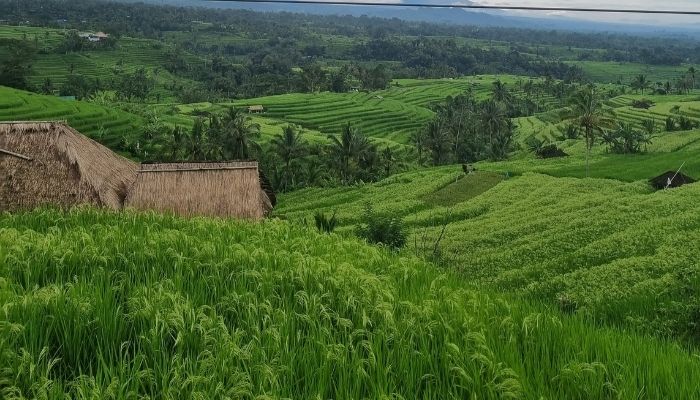
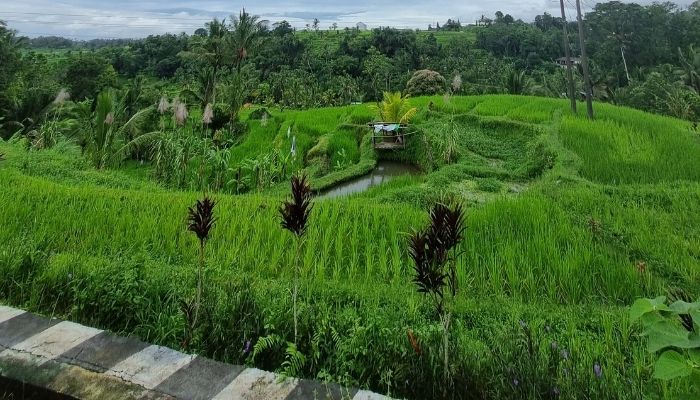
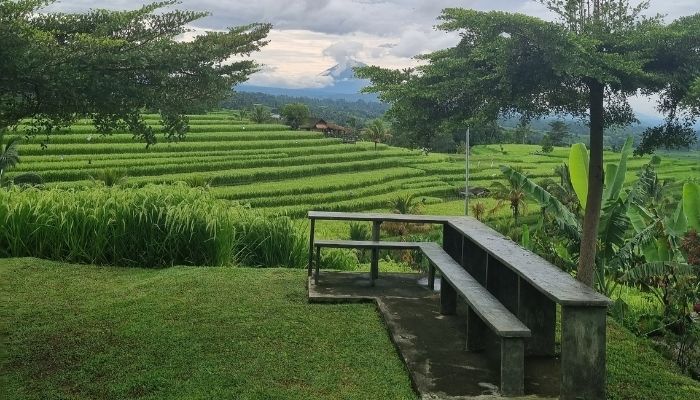
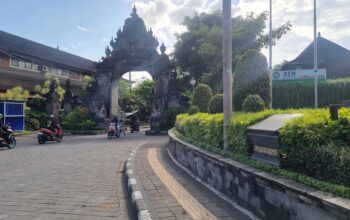
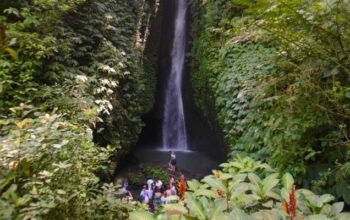

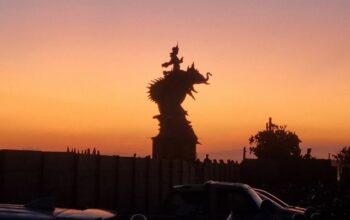

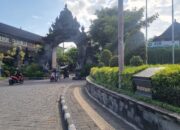
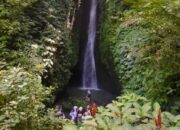



Response (1)